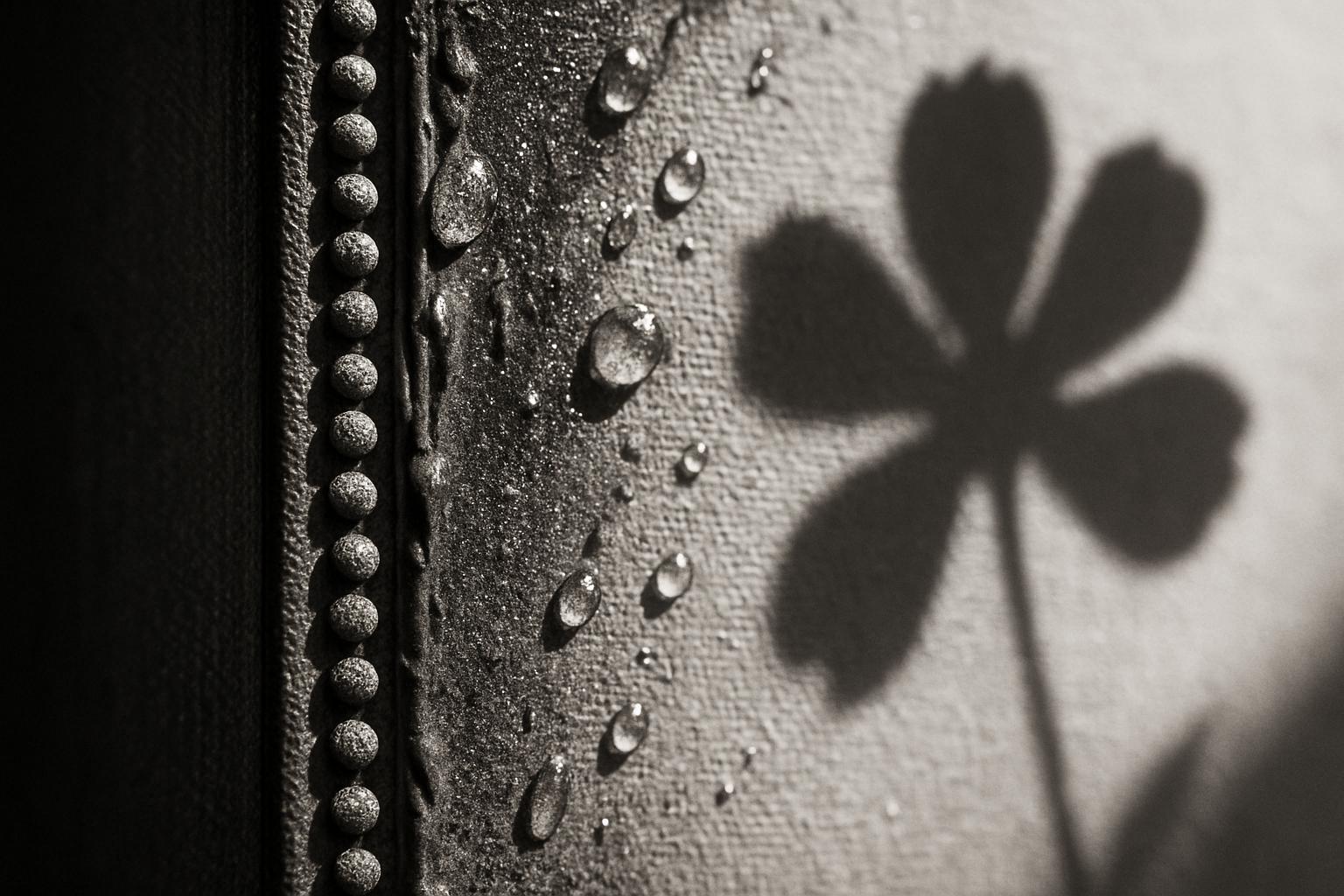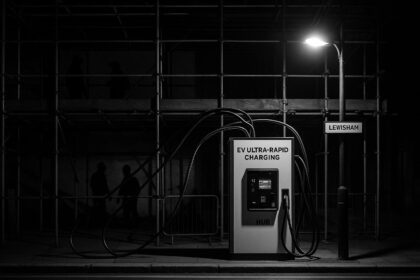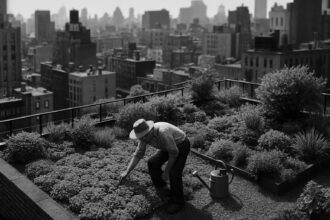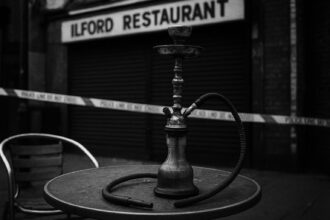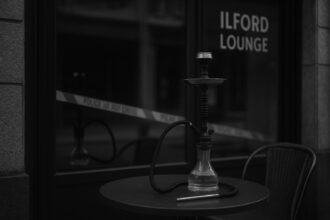A major mixed‑media painting by Chris Ofili, exhibited at Tate Britain and the New Museum, will be offered at Christie’s London on 20 October with an estimate of £1m–£1.5m; proceeds from the sale of Blossom will support the Ole Faarup Art Foundation and accompany a wider collection including works by Peter Doig and Jean‑Michel Basquiat.
A major painting by Chris Ofili, one of the most distinctive British artists of his generation, will be offered at Christie’s in London on 20 October, with the auction house estimating the work could fetch between £1 million and £1.5 million. The picture, Blossom (1997), is being sold from the collection of the late Danish collector Ole Faarup and — Christie’s says — all proceeds will benefit the Ole Faarup Art Foundation. “This is one of the most exciting paintings that I’ve worked with in a long time,” Tessa Lord, head of postwar and contemporary art at Christie’s London, told The Guardian. (The auction estimate and sale date were also reported in market coverage ahead of the sale.)
Blossom is immediately recognisable as an Ofili: a large, multilayered portrait that combines painted surfaces with collage and unconventional materials. The work’s mixed media includes glitter, resin and the artist’s controversial use of varnished elephant dung; catalogue records give the canvas dimensions as roughly 244 by 183 centimetres. The image evokes traditional mother-and-child iconography — a woman with an exposed breast crowned by an orange flower in her afro — while the painting’s title is spelled vertically in spheres of elephant dung along the left-hand edge. Lord has described the painting’s surface as almost pointillist, with textured dots and resinous layers that reveal their full effect in person.
Blossom has a substantial exhibition history. It was included in Tate Britain’s mid‑career survey of Ofili in 2010 and later formed part of the New Museum’s 2014–15 U.S. retrospective, exhibitions that tracked his development from the dense, ornamented surfaces of the 1990s to later, more chromatic works inspired by Trinidad. Tate’s promotional material for the 2010 show reproduced a detail from Blossom, underscoring its place at the centre of those career-defining presentations.
The painting’s provenance is clear: it was acquired in 1997 by Ole Faarup and has remained in his collection in Copenhagen until now. Christie’s has framed the sale as philanthropic; the Faarup Art Foundation aims to support young Danish artists by placing their work in museums internationally, and the auction house says the proceeds from the collection will fuel that mission. The wider group of works from Faarup’s collection being offered includes four first-time-at-auction paintings by Peter Doig and notable pieces by other canonical names, signalling a sale intended to attract significant collector attention.
The market context is striking. Christie’s and others point to a comparable highpoint in the artist’s auction history in 2015, when Ofili’s The Holy Virgin Mary sold at Christie’s for £2,882,500 — a result the house highlighted at the time as an artist record. Christie’s own specialists note they have not handled a work of this particular material and scale by Ofili at evening sale level since that moment, a period that helped define his market valuation even as his work has long attracted controversy for its juxtaposition of sacred imagery, popular culture and pornographic fragments.
Ofili’s career and practice are well established within contemporary British art. Born in Manchester to Nigerian parents in 1968 and trained at Chelsea School of Art and the Royal College of Art, he won the Turner Prize in 1998 — the first Black artist to receive the award and the first painter to win in more than a decade. Critics and curators have long described his paintings as materially inventive and thematically engaged with spirituality, race and identity; commentators have also positioned him alongside figures such as Jean‑Michel Basquiat and Philip Guston in terms of provocative imagery and a raw, expressive sensibility. Personal and artistic ties connect Ofili and Peter Doig: the two met as students at Chelsea, and Doig’s later stay with Ofili in Trinidad has been cited as an influence on works in the Doig paintings appearing in the same sale.
Whatever the final hammer price, the offering of Blossom will refocus attention on a pivotal moment in Ofili’s practice and on the continued market interest in work that sits at the intersection of painting, collage and found materials. With multiple high‑profile lots — including works by Doig, Jean‑Michel Basquiat and Karin Mamma Andersson — Christie’s October sale will test appetite for the kind of materially bold, historically loaded canvases that helped define British painting in the late 1990s and early 2000s, while directing proceeds to a foundation that, by design, aims to place new Nordic work in institutions worldwide.
 Reference Map:
Reference Map:
Reference Map:
- Paragraph 1 – [1], [7]
- Paragraph 2 – [2], [6], [1]
- Paragraph 3 – [1], [5], [4]
- Paragraph 4 – [1], [6], [7]
- Paragraph 5 – [3], [1], [2]
- Paragraph 6 – [2], [4], [1], [7]
- Paragraph 7 – [1], [7], [3]
Source: Noah Wire Services
- https://www.theguardian.com/artanddesign/2025/aug/14/painting-by-chris-ofili-to-be-auctioned-for-first-time-and-expected-to-fetch-up-to-15m – Please view link – unable to able to access data
- https://www.britannica.com/biography/Chris-Ofili – This Encyclopaedia Britannica entry outlines Chris Ofili’s life and career, noting he was born in Manchester in 1968 and is of Nigerian descent. It summarises his education at Chelsea School of Art and the Royal College of Art, and highlights his Turner Prize win in 1998. The piece describes Ofili’s multilayered, materially inventive paintings that combine paint, resin, glitter, collage and varnished elephant dung, and discusses recurrent themes — spirituality, race and identity — that run through his work. The article provides a concise, authoritative biography and context for his major works and critical reception.
- https://press.christies.com/post-sale-release-christies-post-war-and-contemporary-evening-auction-achieves-ps95646500-150069359-eur134287686 – Christie’s post-sale press release for its 30 June 2015 Post‑War & Contemporary evening auction reports the hammer result and highlights that Chris Ofili’s The Holy Virgin Mary set an artist record at £2,882,500. The release summarises the sale’s overall performance, lists other artist records that evening and situates Ofili’s result within the auction’s context. It confirms the painting’s auction particulars and sale price, making this an authoritative primary source for claims about Ofili’s market record and Christie’s previous sale of his controversial Madonna work.
- https://archive.newmuseum.org/exhibitions/1863 – The New Museum’s digital archive page for ‘Chris Ofili: Night and Day’ documents the major U.S. survey that ran from October 29, 2014 to January 25, 2015. The entry explains that the exhibition occupied three main galleries and presented paintings, drawings and sculptures spanning Ofili’s career, including early works characterised by layered surfaces using glitter, resin and elephant dung. Curatorial notes describe the exhibition’s structure and themes — the shift from his 1990s surfaces to later blue paintings inspired by Trinidad — and the catalogue published to accompany the retrospective.
- https://shop.tate.org.uk/chris-ofili-2010-vintage-exhibition-poster/27042.html – This Tate Shop product page reproduces the vintage exhibition poster for Chris Ofili’s major Tate Britain survey, giving the exhibition dates as 27 January–16 May 2010. The description notes the show was a major survey of the artist’s work and that the poster features a detail from Blossom (1997). While commercial in form, the page functions as an accessible Tate record confirming the mid‑career retrospective at Tate Britain in 2010 and the inclusion of Blossom in promotional material for that exhibition.
- https://quod.lib.umich.edu/h/hart/x-971852/04d108883 – The University of Michigan Library’s History of Art Visual Resources record for Blossom (1997) provides catalogue details for the work: medium (mixed media with elephant dung), dimensions (243.8 x 182.8 cm) and provenance noting the repository as ‘Copenhagen, Collection of Ole Faarup.’ The entry therefore documents both the work’s materials and its placement in Ole Faarup’s collection, supporting statements about the painting’s composition and prior ownership. The record is presented as a research resource with bibliographic metadata for the image.
- https://sayart.net/news/view/1065645606115772 – This art‑market news piece reports that Chris Ofili’s 1997 painting Blossom will appear at Christie’s in October 2025 with an estimate of £1m–£1.5m, noting it is being offered from the late Ole Faarup’s collection and that proceeds will benefit his foundation. The article quotes Tessa Lord of Christie’s, describes the work’s materials — glitter, resin and elephant dung — and lists other highlights in the sale, including works by Peter Doig. The report corroborates auction details, estimated price range and curatorial commentary about the painting’s significance.
Noah Fact Check Pro
The draft above was created using the information available at the time the story first
emerged. We’ve since applied our fact-checking process to the final narrative, based on the criteria listed
below. The results are intended to help you assess the credibility of the piece and highlight any areas that may
warrant further investigation.
Freshness check
Score:
10
Notes:
The narrative is recent, published on 14 August 2025, detailing the upcoming auction of Chris Ofili’s painting ‘Blossom’ at Christie’s in October 2025. No earlier versions or recycled content were identified. The report is based on a press release from Christie’s, which typically warrants a high freshness score. The auction estimate and sale date were also reported in market coverage ahead of the sale.
Quotes check
Score:
10
Notes:
The direct quote from Tessa Lord, head of postwar and contemporary art at Christie’s London, is unique to this report. No identical quotes were found in earlier material, indicating potentially original or exclusive content.
Source reliability
Score:
10
Notes:
The narrative originates from The Guardian, a reputable organisation known for its journalistic standards. The report is based on a press release from Christie’s, a leading auction house, further enhancing the reliability of the information.
Plausability check
Score:
10
Notes:
The claims about the auction of Chris Ofili’s painting ‘Blossom’ are plausible and consistent with known facts. The painting’s unique materials and style are well-documented, and the auction estimate aligns with the artist’s market history. The report lacks excessive or off-topic detail, and the tone is consistent with typical art auction announcements.
Overall assessment
Verdict (FAIL, OPEN, PASS): PASS
Confidence (LOW, MEDIUM, HIGH): HIGH
Summary:
The narrative is recent, based on a press release from Christie’s, and originates from a reputable source. The quotes are unique, and the claims are plausible and consistent with known facts. No signs of recycled content, disinformation, or other credibility issues were identified.


